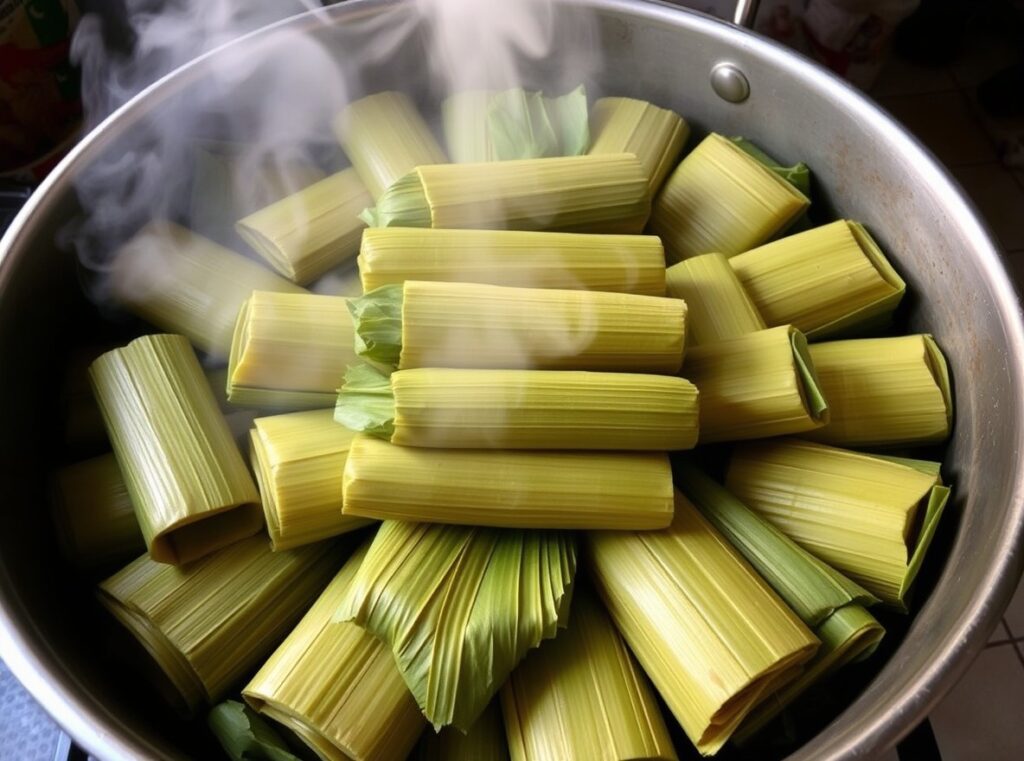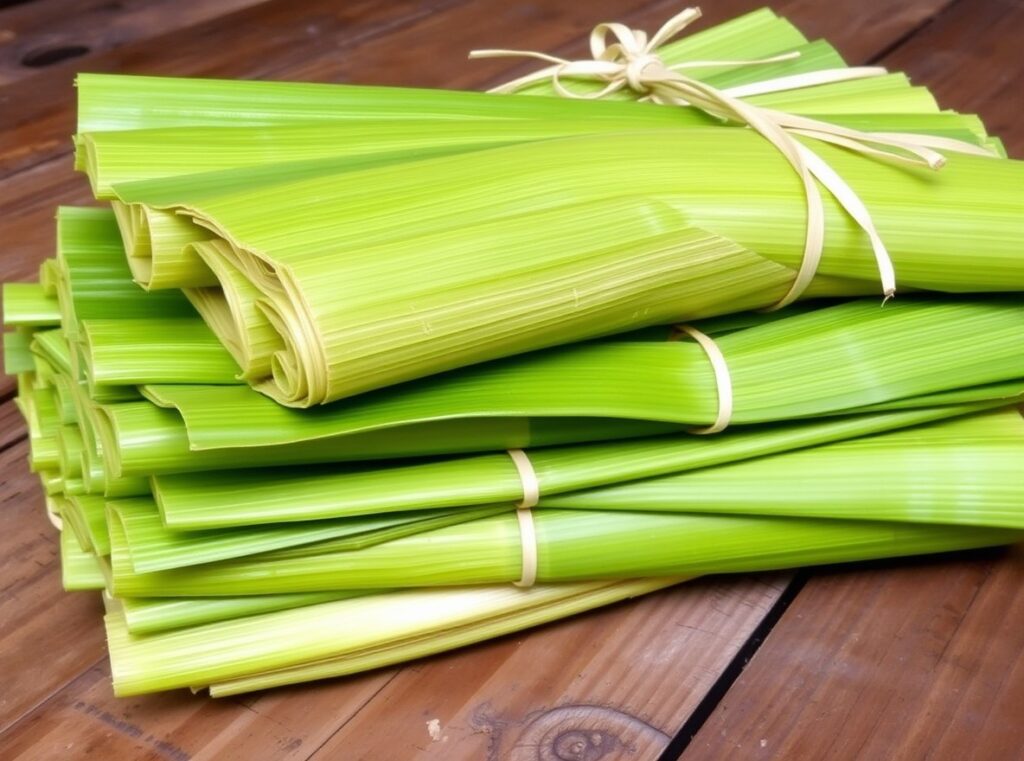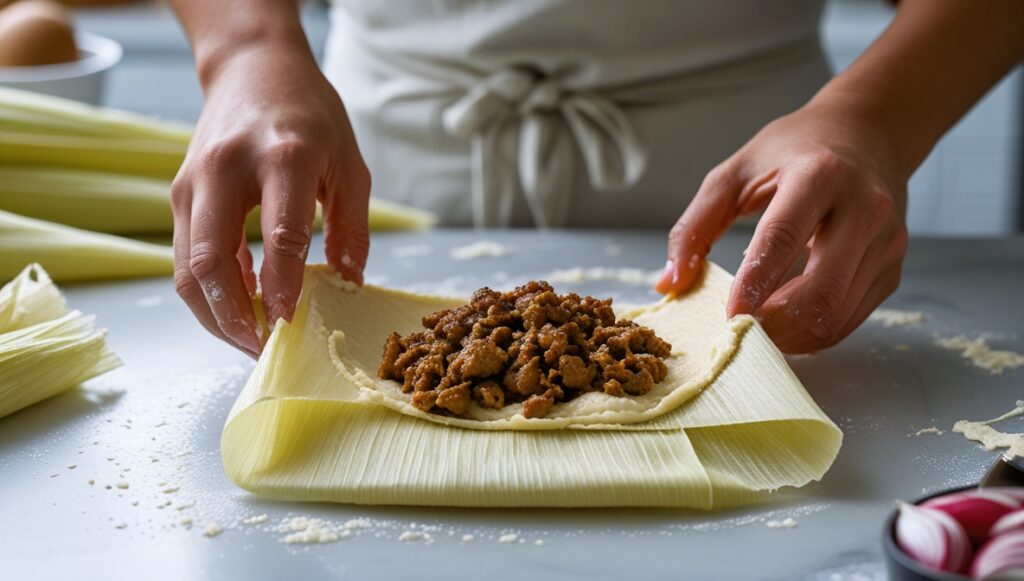Introduction
Tamales Salvadoreños, a beloved Traditional El-Salvador Food, offer a flavorful and comforting taste of the country’s rich culinary heritage. These steamed corn dough parcels, filled with seasoned meats, vegetables, or beans, are wrapped in banana leaves, giving them a distinctive aroma and texture. They are a staple at family gatherings, celebrations, and holidays, making them one of the most Famous Foods in El Salvador.


History & Cultural Significance
The origins of Tamales Salvadoreños trace back to the indigenous Pipil people of Mesoamerica, who prepared maize-based dishes long before Spanish colonization. The technique of wrapping food in banana leaves for cooking was widely used by early civilizations. Over time, this dish became a cultural symbol and is now an essential part of Salvadoran Christmas, religious celebrations, and special family occasions.
Ingredients & Regional Variations
Key Ingredients:
Masa (corn dough)
Chicken, pork, or beef
Tomatoes, bell peppers, onions
Achiote (annatto) for color
Banana leaves for wrapping
Lard or vegetable oil for moisture
Olives, capers, and potatoes (optional)
Regional Variations:
Tamales Pisques: Made with black bean filling and often served as a snack.
Tamales de Elote: Sweet tamales made with fresh corn, sugar, and milk.
Tamales de Pollo o Cerdo: Filled with seasoned chicken or pork and traditional spices.
Cooking Process & Difficulty Level

Difficulty Level:
Intermediate (requires time and preparation)
Brief Cooking Guide:
Prepare the Masa: Mix corn dough with broth, lard, and seasonings.
Make the Filling: Cook meat with vegetables, spices, and achiote.
Assemble the Tamales: Spread masa onto banana leaves, add filling, and fold securely.
Steam the Tamales: Place in a large pot with water and cook for 2-3 hours.
Where to Eat Tamales Salvadoreños in El Salvador
For an authentic experience, try Tamales Salvadoreños at these locations:
Mercado Central (San Salvador): A bustling market with traditional food stalls.
Los Planes de Renderos: Famous for street food and Salvadoran tamales.
El Rincón Salvadoreño: A hidden gem offering homemade-style tamales.
Pairing with Drinks & Side Dishes
Best Drinks to Pair:
Atol de Elote: A warm, sweet corn-based drink.
Horchata: A spiced rice milk beverage.
Tamarindo Juice: A tangy and refreshing option.
Side Dishes:
Curtido (fermented cabbage slaw)
Casamiento (rice and beans)
Fresh cheese or avocado slices
Fun Facts & Lesser-Known Trivia
Some families prepare tamales in bulk, freezing them for future meals.
The banana leaves add both flavor and moisture during steaming.
Unlike Mexican tamales, Salvadoran tamales have a softer, more delicate texture due to the use of broth in the masa.
Health Benefits & Nutrition
Tamales Salvadoreños are high in carbohydrates from corn dough and provide protein from meat fillings. While traditional recipes use lard, modern versions incorporate vegetable oils for a healthier option. Vegan variations include plant-based fillings like beans and vegetables.
Best Tamales Salvadoreños Recipe (Simple Version)
Ingredients:
2 cups masa harina
1 1/2 cups chicken broth
1/2 cup lard or vegetable oil
1 lb cooked chicken or pork
1 onion, diced
2 tomatoes, chopped
Banana leaves
Steps:
Mix masa harina, broth, and lard to form a smooth dough.
Sauté onions and tomatoes, then add shredded meat.
Cut banana leaves into squares and soften them by briefly passing over a flame.
Spread masa on leaves, add filling, and fold tightly.
Steam in a large pot for about 2-3 hours until firm.
Global Influence & Fusion Cuisine
Tamales Salvadoreños have inspired adaptations worldwide, especially in the U.S., where they appear in Latin American fusion cuisine. Some chefs incorporate ingredients like cheese, spicy sauces, or seafood, creating innovative versions of this Traditional El Salvador Food.
Comparison with Similar Dishes
Mexican Tamales: Firmer texture, wrapped in corn husks.
Guatemalan Tamales: Larger, often featuring a tomato-based sauce.
Nicaraguan Nacatamales: Includes rice and is heavily seasoned.

